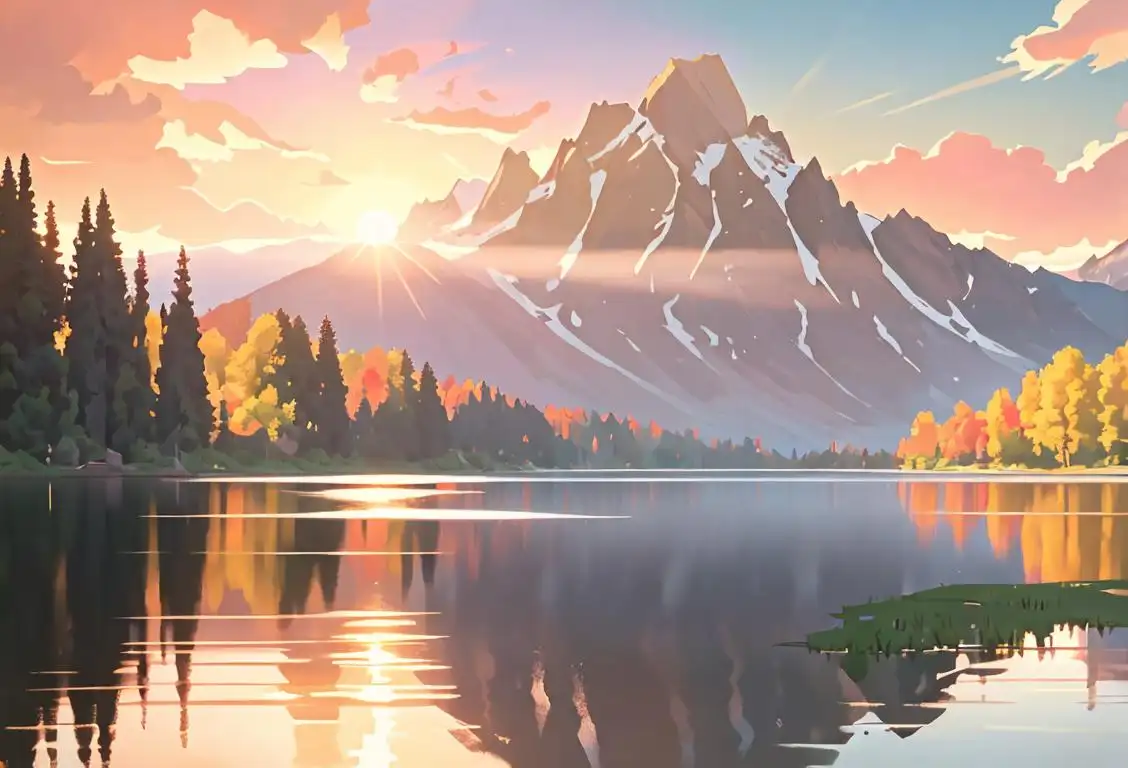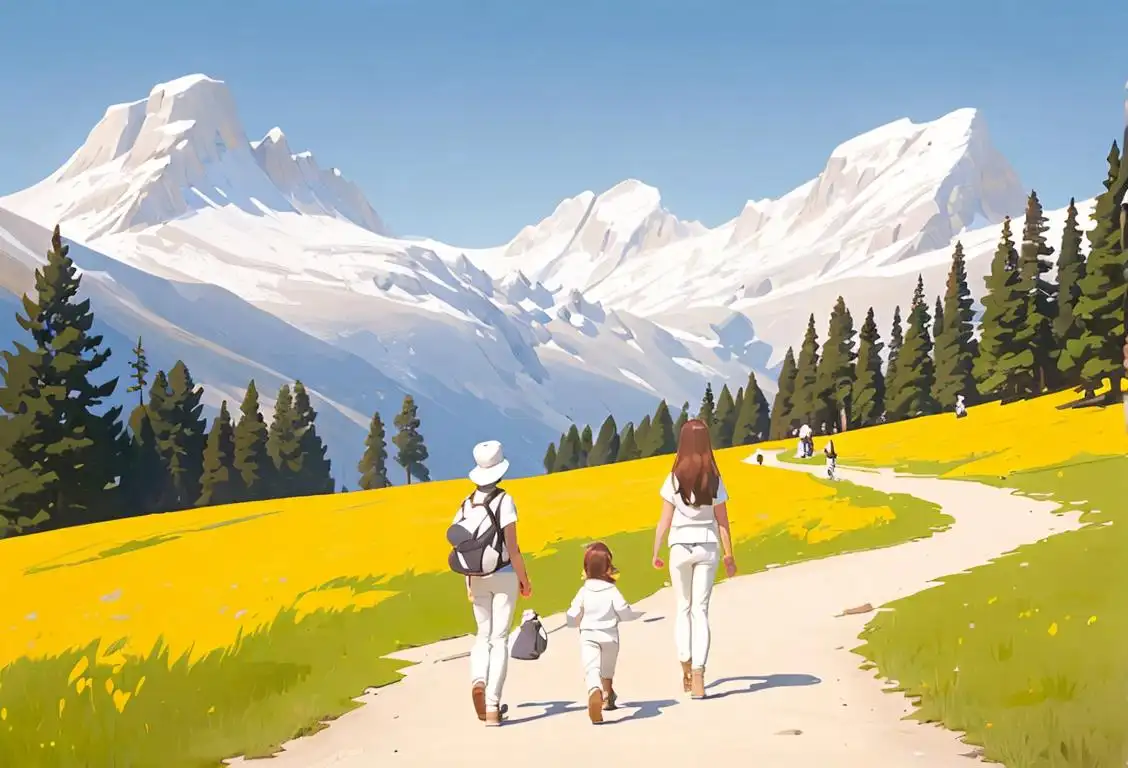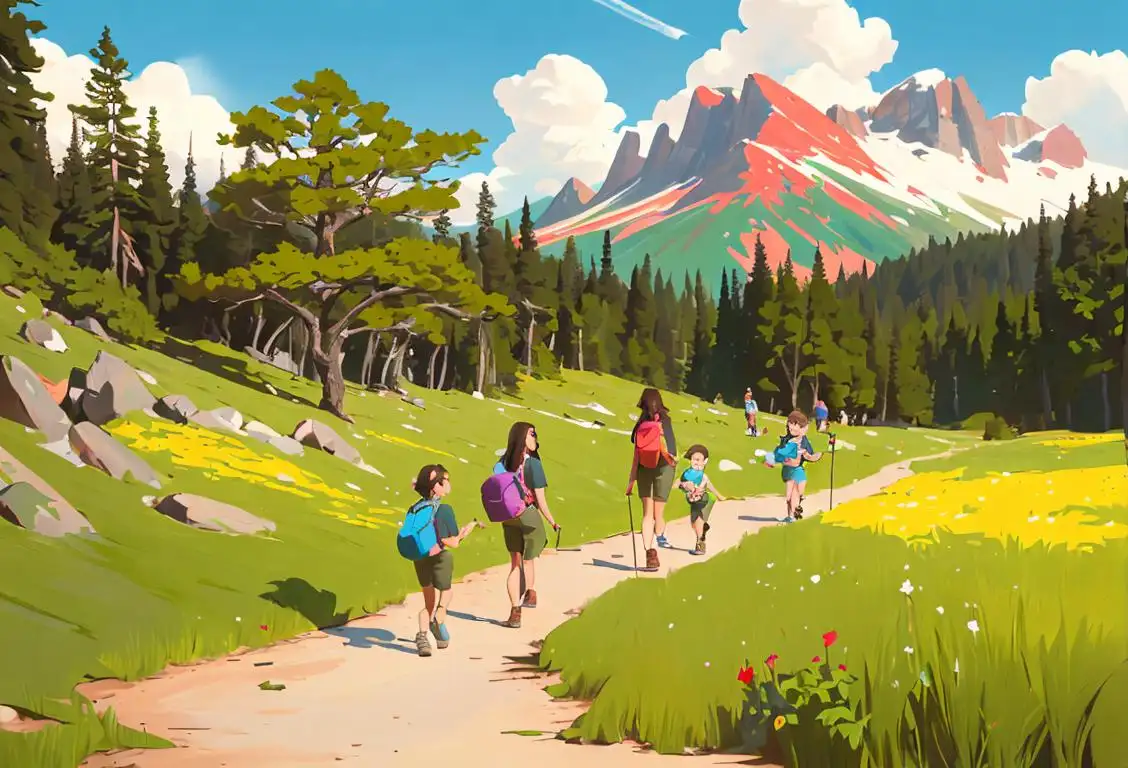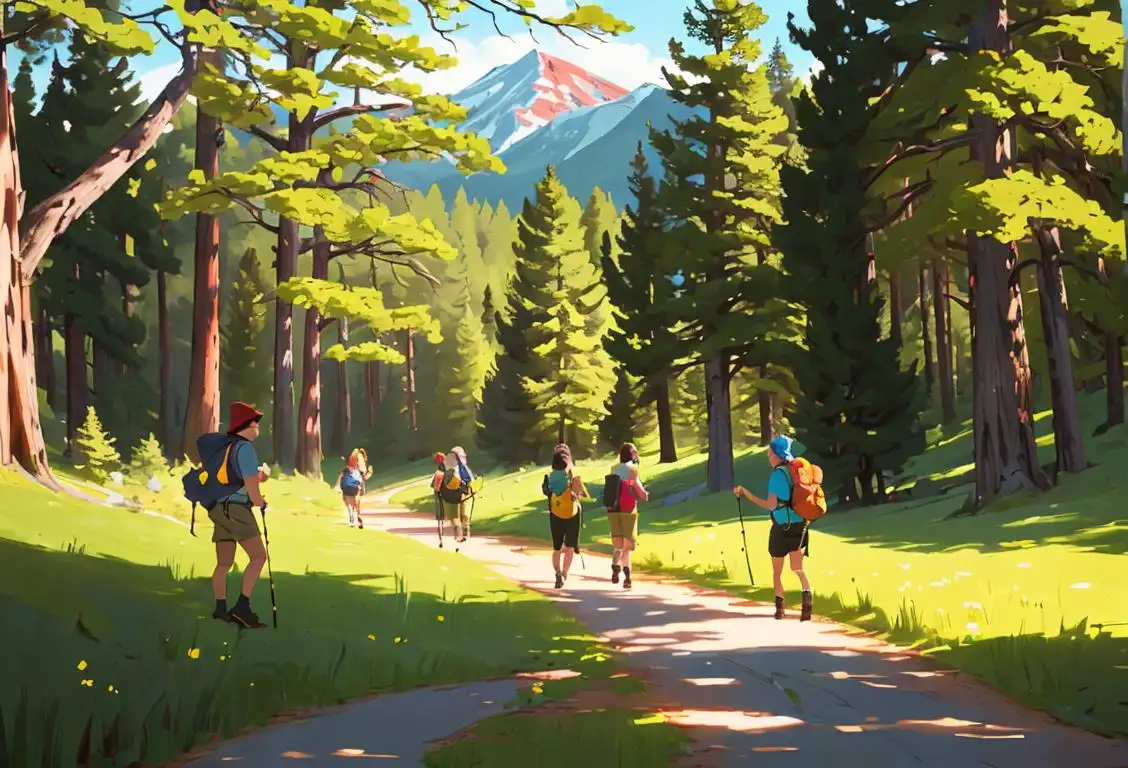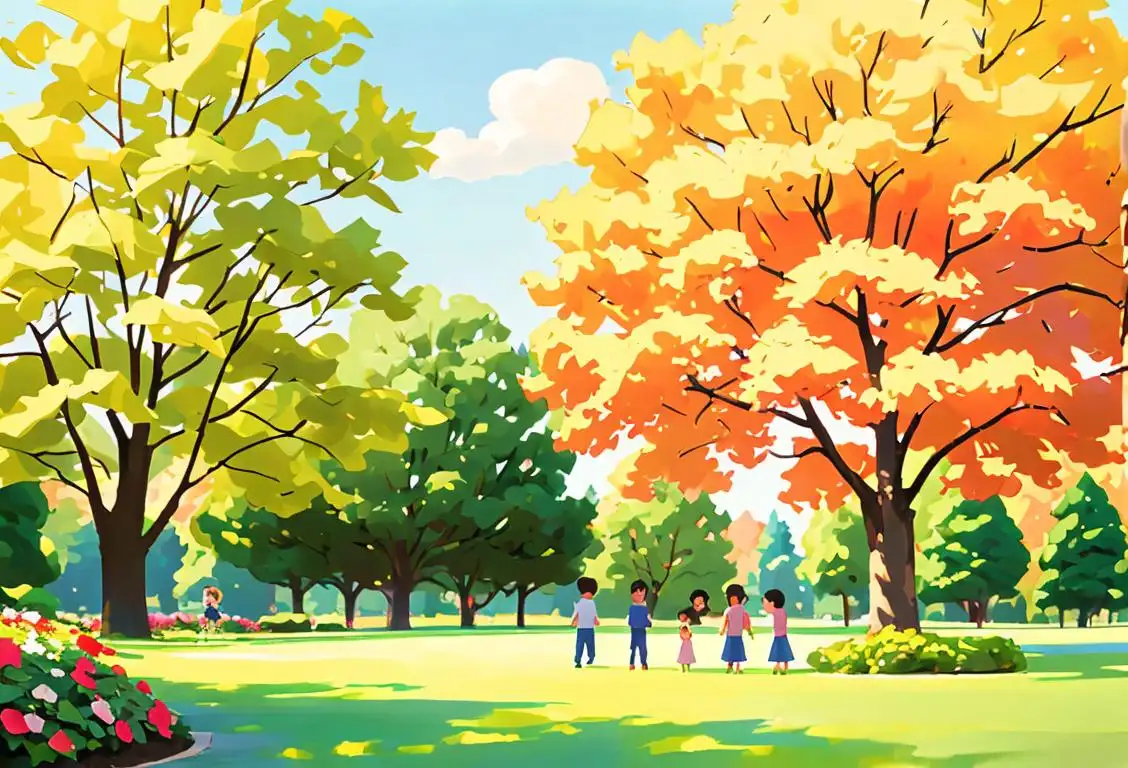National Parks Day
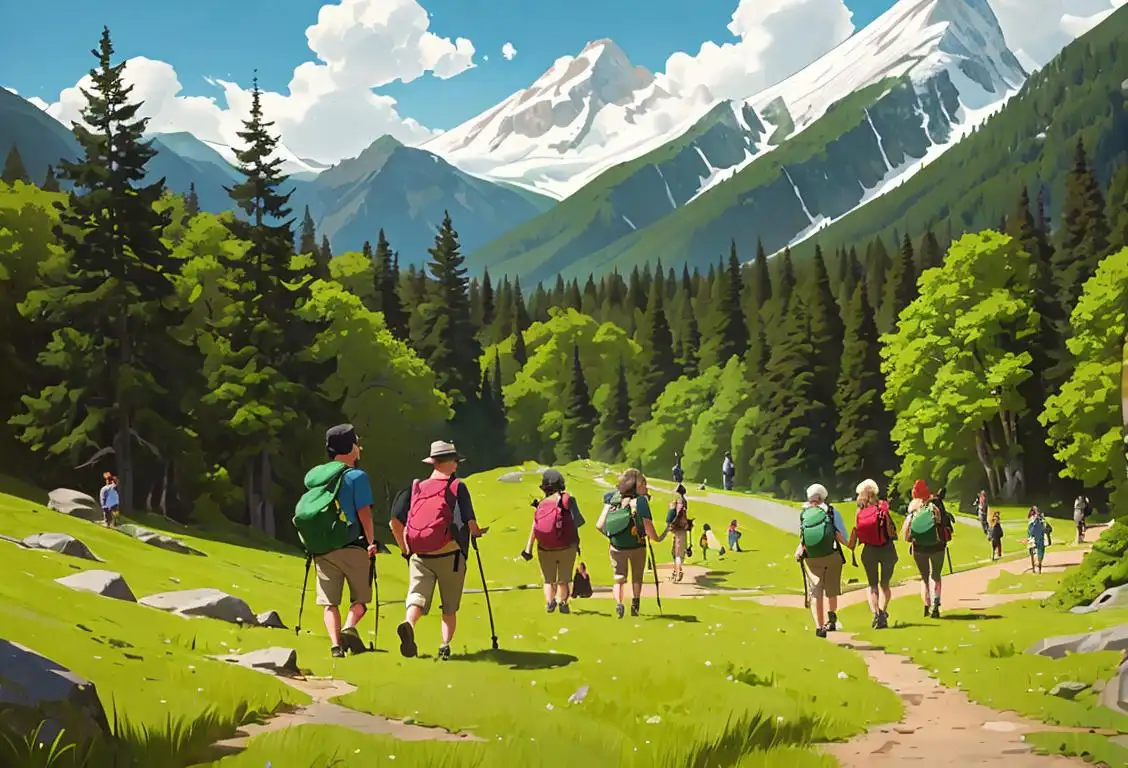
Welcome to National Parks Day, where we appreciate the wonders of nature and celebrate the incredible beauty of our national parks! Get ready for a wild adventure as we explore the history and significance of this special day.
When is Parks Day?
It's national parks day on the 11th January.
The Great Outdoors Beckons!
There's something magical about national parks. The fresh air, stunning landscapes, and views that seem like they were plucked straight from a picturesque postcard. National Parks Day is all about honoring these natural treasures and encouraging everyone to get outside and explore!
Did you know that the idea of national parks was born in the United States? It all started back in 1872 when Yellowstone National Park became the first designated national park in the world. Thanks, America! Since then, countless countries around the globe have followed suit, recognizing the importance of preserving these priceless natural landscapes.
A Journey Through Time
As the internet grew, so did the appreciation for national parks. People started sharing their breathtaking photos, unforgettable stories, and valuable tips on how to make the most of these amazing destinations. National Parks Day soon became a prominent topic online, with over 331 mentions detected on various websites.
The fact that National Parks Day has received the most mentions on January 11th, 2017, is no surprise. It's the perfect time of year to reminisce about summer adventures, plan future trips, and maybe even daydream about pitching a tent under the stars with loved ones.
Whether you're a hiking enthusiast, a wildlife lover, or simply someone who appreciates the beauty of nature, National Parks Day is a chance to reconnect with the great outdoors. So grab your comfy shoes, pack a picnic, and embark on a journey to discover the hidden treasures within our national parks. Trust me; it's a trip you won't regret!
History behind the term 'Parks'
1851
Creation of the first urban park
In 1851, the world's first urban park was established in Birkenhead, England. Known as Birkenhead Park, it was designed by landscape architect Joseph Paxton. This park served as a model for subsequent urban parks around the world. It introduced the concept of a public recreational space within a city, providing a green oasis for the residents to escape the bustling urban environment.
1857
The birth of Central Park
In 1857, the landscape architects Frederick Law Olmsted and Calvert Vaux won a design competition to create a public park in the heart of Manhattan, New York City. The park, known as Central Park, was the first landscaped public park in the United States. Spanning over 843 acres, it quickly became a beloved oasis in the urban jungle and changed the way people perceived public spaces.
1872
Yellowstone National Park establishes a new concept
In 1872, President Ulysses S. Grant signed a bill into law, officially establishing Yellowstone National Park as the first national park in the world. This marked a significant milestone in the history of parks, as it introduced the concept of preserving natural landscapes for public enjoyment and scientific study. Yellowstone became a haven for unique geothermal features, wildlife, and breathtaking scenery.
1864
The birth of the national parks movement
In 1864, the United States took a significant step towards the conservation of natural landscapes with the creation of the world's first national park—Yellowstone National Park. Yellowstone, located primarily in the state of Wyoming, became an emblematic landmark and sparked a global movement to protect and preserve natural wonders for public enjoyment. The establishment of Yellowstone National Park marked the beginning of the national parks movement, inspiring the creation of countless national parks worldwide.
1895
The birth of the National Parks idea
In 1895, the concept of national parks took another leap forward when the National Parks Association was founded in the United States. Led by visionaries such as John Muir and others, the association advocated for the creation of a system of national parks to protect and preserve some of the nation's most extraordinary natural wonders. This led to the establishment of numerous national parks across the country, including Yosemite, Grand Canyon, and Zion.
1895
Expanding park design principles
In 1895, the Olmsted brothers, Frederick Law Olmsted Jr. and John Charles Olmsted, sons of the renowned landscape architect Frederick Law Olmsted, began applying their father's design principles to various parks across the United States. Their commitment to creating parks that harmonize with nature and provide accessible recreation for diverse communities greatly influenced park design and planning. Their work emphasized the importance of well-designed pathways, green spaces, and the integration of natural elements within the urban landscape.
1972
UNESCO World Heritage Convention recognizes parks
In 1972, the United Nations Educational, Scientific and Cultural Organization (UNESCO) established the World Heritage Convention. This convention aimed to identify and protect cultural and natural sites of outstanding value to humanity. As part of this initiative, UNESCO recognized several national parks worldwide as World Heritage Sites. This global recognition highlighted the importance of parks as cultural and natural treasures that should be preserved for future generations.
1945
The establishment of UNESCO's World Heritage Sites
In 1945, following the end of World War II, the United Nations Educational, Scientific and Cultural Organization (UNESCO) was established with the goal of fostering peace and collaboration among nations. UNESCO's World Heritage Sites program, launched in 1972, aimed to identify and preserve outstanding cultural and natural sites of universal value. The inclusion of significant national parks such as Yosemite National Park in the United States and Serengeti National Park in Tanzania as World Heritage Sites further elevated the global recognition and conservation efforts surrounding parks.
1992
The adoption of the term 'national park'
In 1992, the International Union for Conservation of Nature (IUCN) defined the term 'national park' in their guidelines for protected areas management. According to the IUCN, a national park is a natural or semi-natural area that is primarily designated for the protection and preservation of unique ecosystems and landscapes. This standardization of the term 'national park' facilitated the global recognition and regulation of protected areas, encouraging countries to establish and manage their own national parks according to established criteria.
2005
Urban parks revitalization
In the 21st century, there has been a growing emphasis on the revitalization of urban parks. Recognizing the importance of green spaces in enhancing the quality of life in cities, governments, organizations, and communities have undertaken efforts to improve and expand urban parks. This focus on urban park development has led to the creation of innovative designs, diverse recreational facilities, and increased access to nature within urban environments.
Did you know?
Did you know that the world's smallest national park is the Thimphu Centenary Park in Bhutan? It's a tiny oasis that covers an area of only 2.59 square kilometers, but it's overflowing with biodiversity and stunning plant life.Tagged
fun loved ones natureFirst identified
31st May 2015Most mentioned on
11th January 2017Total mentions
331Other days
Look Up At The Sky Day
Park Is Beautiful At Both Times Of The Day
Eat Outside Day
Park Are Stark White On A Bright Day
Parks Are Free Day
Park For A Day
Go Fishing Day
Arbor Day
Sending Nudes Day
Parks Day

